Following a 7-hour day of reasonably strenuous hiking in an arid environment, through landscapes that offered little respite from the hot sun overhead, I slept well that night, woken only on the couple of occasions that our furry friend decided to warn us of approaching creatures by barking loudly.
Instead of being annoyed that my sleep had been disturbed, I felt comforted by the fact that not only was our loyal companion still outside, but that he continued to look out for us and protect us, even while we were sleeping.
As I’d reluctantly agreed to hire mules for the climb back up to Cabanaconde, we only had to hike as far as Sangalle on the third and final day of our trek. For this reason we were looking forward, not necessarily to a lie-in, but to waking up naturally and having a more leisurely start to the day. Unfortunately the Norwegian couple had other ideas and requested a 6am breakfast, to which the hospedaje owner obligingly agreed. As we were the only four guests at the property, and the owner was not prepared to cook breakfast twice (understandably), we found ourselves rudely awakened by our alarm at 5:45am, giving us just enough time to throw some clothes on and stumble, bleary-eyed, down to the breakfast table.
As we did so, we found our guide in exactly the same position outside the door of our bamboo hut as we’d left him the night before. He trundled down the stairs after us and dutifully sat by our feet as we ate, gratefully accepting the few morsels of scrambled eggs and pancakes that we didn’t have room for.
After breakfast we paid our bill (92 soles (£20.14) for overnight accommodation, two meals, numerous cups of coffee and tea, and two large bottles of water) and returned to our room to collect our backpacks. We noticed the Norwegian gentleman seemingly absorbed in his morning exercise routine, so we thanked the the hospedaje owner for her kindness and hospitality, said our goodbyes and decided to hit the road.
We headed downhill towards Coshñirwa, along a relatively steep winding path whose surface was peppered with loose rocks and shale, designed to test your balance, stability and the tread on your walking shoes. I didn’t fare especially well, choosing caution over speed, so before long the three of us had become five (yup, the Norwegian hiking afficionados had made light work of the unstable terrain) as we continued our descent.
As the path levelled out we approached the first real signs of the modern world that we’d seen since leaving Arequipa. We heard the grumbling drone of construction machinery well before the numerous diggers, dumper-trucks and earth-movers came into view. As far as we could tell, the old road was being demolished and a new one in the process of being built in its place. The bridge that was mentioned in our directions was no longer there, which made it incredibly tricky to pick our way safely across the Tinku Mayu (a tributary of the Rio Colca). Of course our four-legged friend (having a lower centre of gravity and better balance, provided by an additional two legs) completed this task with ease, and waited patiently for us at the other side of the river.
We followed irrigation channels along a wide, sandy road, passing hanging graves on the opposite side of the gorge. After approximately ten minutes the houses of Coshñirwa began to come into view, and not much further along the trail was the small village of Malata. We stopped to rest a while in its pretty Plaza de Armas – overlooked by an ancient stone church – before continuing our descent to Sangalle.
Not long after leaving Malata, we were confronted with a bit of an obstacle – a landslide had collapsed the path ahead of us, leaving nothing but a scree slope in its wake. With no-one else around and no other option but to try and cross it, I began to panic. Even the slightest disturbance could trigger a further landslide, which in turn would send us plummeting down into the deep valley below.
Fortunately, as we grew closer we could see that a narrow ridge had been created in the scree (evidence that others had made the crossing before us), so, one by one, and ensuring we kept one foot in front of the other, we carefully made our way across the slope, breathing an enormous sigh of relief when we arrived safely back on the trail again. Once again, our furry friend made light work of the crossing, barely dislodging the loose terrain beneath his feet.
Not long after we’d made the crossing we turned a corner and were presented with a spectacular view back down the valley. We were even able to pick out the path that we’d taken down to San Juan de Chucco the day before.
In the opposite direction the path descended into a sea of cactus. Terraces of cultivated land overlooked the plateau below us and enormous gulleys carved their way through the rocks like lightening bolts.
At the end of the path we reached a small clearing where a decorated cross mounted on a stack of loose rocks signified the start of the final section of our descent to Sangalle.
We could see the oasis down below us, a verdant area of land nestled at the base of the valley, scattered with red-roofed bungalows and the odd turquoise-coloured pool. It looked so inviting I could almost feel the cool water in those pools against my hot, dusty skin.
The trail snaked its way past tall cactus plants and prickly pears, many of which I stopped to photograph whilst our remaining party of four continued on ahead.
Aside from the elderly lady with her donkeys and the woman we’d passed just outside San Juan de Chucco, we’d been alone on the trail up until now. But here we began to pass locals with their mules, tacking their way up the slope.
As we crossed the hanging bridge at the base of the trail, grass appeared, cactus were replaced by palm trees, and banana plants grew in abundance. At first it was almost like we’d arrived in paradise.
Despite the fact that it was only 11am when we arrived, we almost considered staying overnight in one of the cute little bamboo huts contained within the perfectly manicured, terraced garden. We contemplated stripping down to our swimwear and going for a refreshing swim, or lying by the poolside with a good book in one hand and a mojito in the other.
But it soon became apparent that the place was swarming with mosquitoes, the bar didn’t serve mojitos, and the service in the restaurant was beyond shocking (we waited longer for our food than those who ordered after us, the staff were rude, and I found meat in my supposedly vegetarian option) so we decided that perhaps paradise was merely superficial. We had a much more enjoyable time up in the mountains of Tapay the night beforehand.
Our furry friend seemed oblivious to the other tourists who lazed around by the pool and munched their way through platefuls of food in the restaurant, choosing to stay by our side as we haggled the price of a pair of mules and waited patiently for them to arrive.
I’d convinced myself that as soon as we got on those mules our faithful hound would regard himself as superfluous (the mules would then become our guides, transporting us safely back up to Cabanaconde), and subsequently find his way back home (if he had a home; we’ll never know). It saddened me to think that he may regard the action of our taking mules as disparaging of his help and loyalty, so I made a last ditch attempt to persuade Stu that we could make the 1200 metre climb (a total of four kilometres up an incredibly steep switchback) on foot.
He was having none of it, and to be fair to him it would have been very hypocritical of me to go back on a promise when I regularly berate him for doing exactly that.
So I gave our four-legged guide a whole lot of fuss, thanked him for all his help (in Spanish – although I suspect he only understands dog), and reluctantly saddled up, ready for the ascent.
I hated every second of the ascent. I’m not comfortable on horses as it is (I went for a guided ride once as a child, and my horse decided to try and throw me off by attempting to bolt over a fence), especially not when the trail is steep, narrow and rocky, and the slightest wrong-hoofing would cause both me and the mule to tumble over the cliff edge to our doom.
I also felt the ride was both unnecessary and cruel when I knew I was perfectly capable of making the climb myself. Yes it would have been hard but not nearly as hard as it must have been for the mule, carrying my weight as well as his own, and not being allowed to take a single break during the entire four kilometre ascent.
I kept suggesting to the mule’s handler that his animals must be tired and hot, and asked if they could rest. But every time he shook his head and garbled something in Spanish that I couldn’t understand.
Because we were ascending so quickly I also had enormous trouble with pressure, and struggled to pop my ears. I was sneezing with alarming regularity (I’m not sure whether I was allergic to the mules or whether it was the dust setting me off), my nose became blocked and I began to develop a headache. The higher we climbed the more intense my headache became. I was miserable, and constantly had to fight the desire to get off and walk.
The only saving grace was every time I looked over my shoulder, I was comforted by the fact that our canine companion was still behind us. He followed us all the way back to Cabanaconde, choking on the dust kicked up by the mules.
He also helped us to find our way back to our hostel, through the confusing, dimly-lit streets of the town. Dusk was fast approaching and the temperature was beginning to plummet once again. We got within about ten metres of Pachamama Backpackers when – with no warning whatsoever – our guide fled. This was so out of character that we didn’t realise that he’d gone until it was too late to follow.
A subsequent conversation with Luy (the gentleman who runs Pachamama Backpackers) revealed that the resident hostel dog, Gringo, is territorial and will fight with any dog who encroaches on his patch. Our loyal companion hadn’t left us – he’d been scared away.
We found ourselves caught between a rock and a hard place. We obviously needed a bed for the night, but we didn’t want to have to say goodbye to our faithful friend. He’d stayed by our sides continuously for the past two days, he’d guided us when we were unsure which route to take, he’d protected us when he detected threats, and he’d not asked for or expected a single thing in return. We wanted to show our appreciation by giving him a proper meal and some genuine love and affection.
After checking into our room, we wandered around the block hopefully, glancing down every little alleyway, and in every doorway we passed – but to no avail.
But then a little later, when Stu had nipped outside for a cigarette, I heard him shouting my name, and as I ran to the door I could see a large grin on his face as he beckoned me down the street. Yep, he’d only gone and found our furry friend.
We showered him with love and affection, made a careful note of the location of his hiding place, and vowed to return later with pizza. This was no ordinary pizza – Pachamama Backpackers serve up some of the tastiest pizza in Peru from their huge clay oven – but it was one I definitely did not mind sharing with someone who deserved every slice.
Practical Info
- If you want to hike the Colca Canyon independently (like we chose to; there’s no guarantee you’ll be accompanied by your very own four-legged guide), visit Colca Trek in Arequipa.
- Although the map and directions (there are six different treks to choose from) they provide are not great, it’s the best you’ll get, and the gentleman who runs the place (Vlado Soto) is incredibly knowledgeable about the area. He can also arrange guided tours that do not follow the usual trails that the rest of the agencies use.
- If you’re serious about your hiking, there is a much better topographical map you can purchase from Colca Trek, but as we’ve never before done orienteering, and we were taking one of the more straightforward routes through the canyon, we’d didn’t think it was worth investing the money.
If you like this article, please follow along on Facebook, Twitter, or Google+ or you can look me up on Instagram or Pinterest too!
This is part of the #SundayTraveler link-up, hosted by Chasing The Donkey, Pack Me To, A Southern Gypsy, The Fairytale Traveler, and Ice Cream and Permafrost.


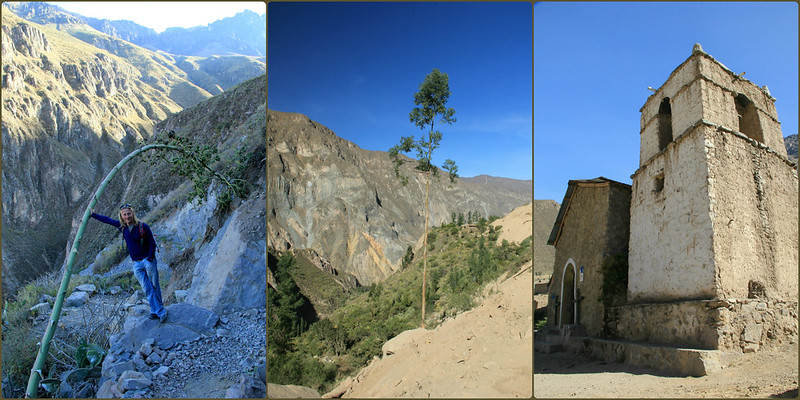

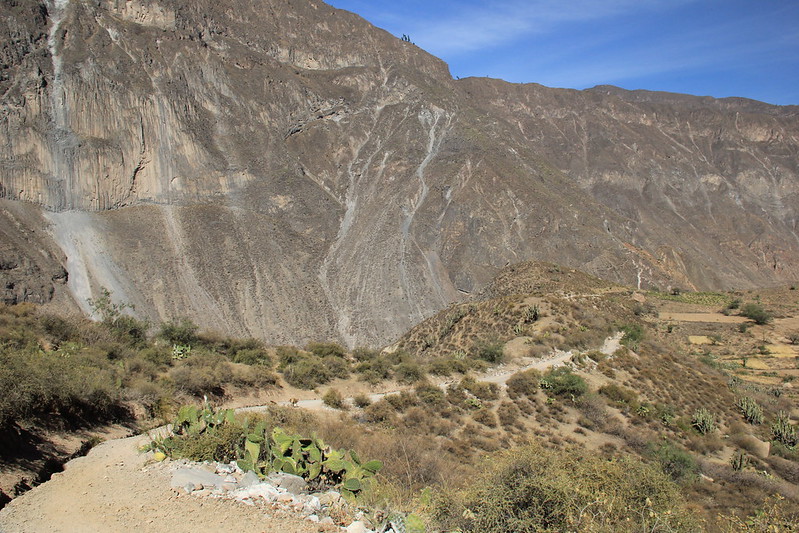
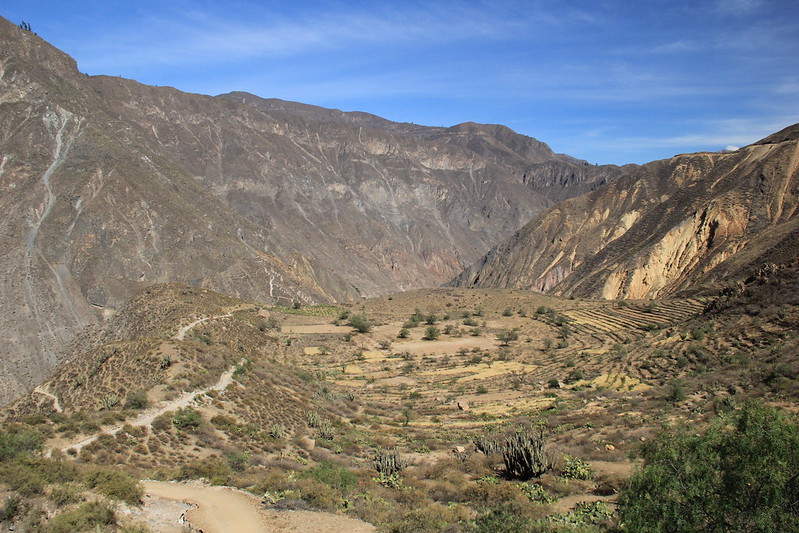
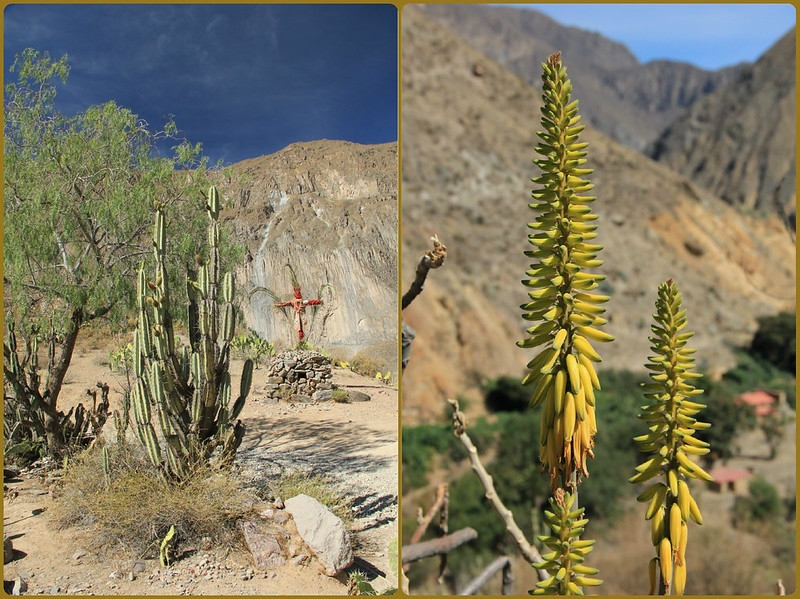
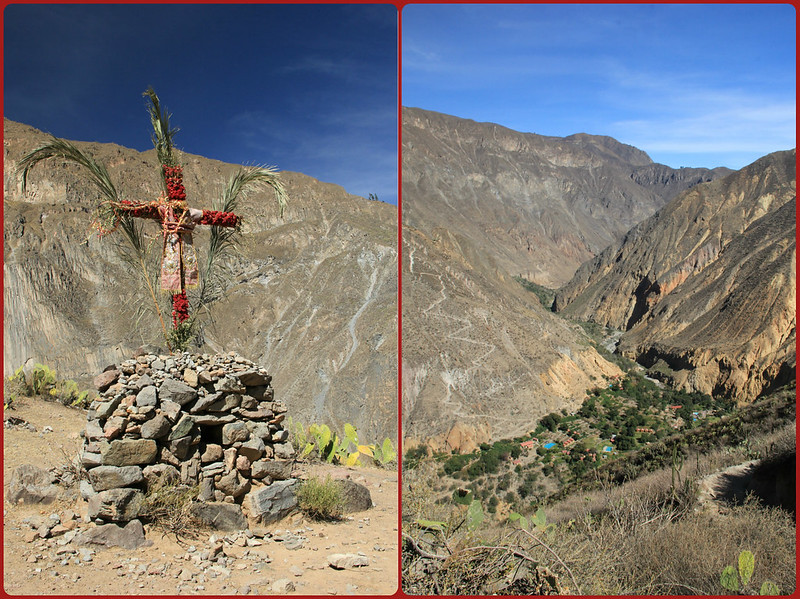
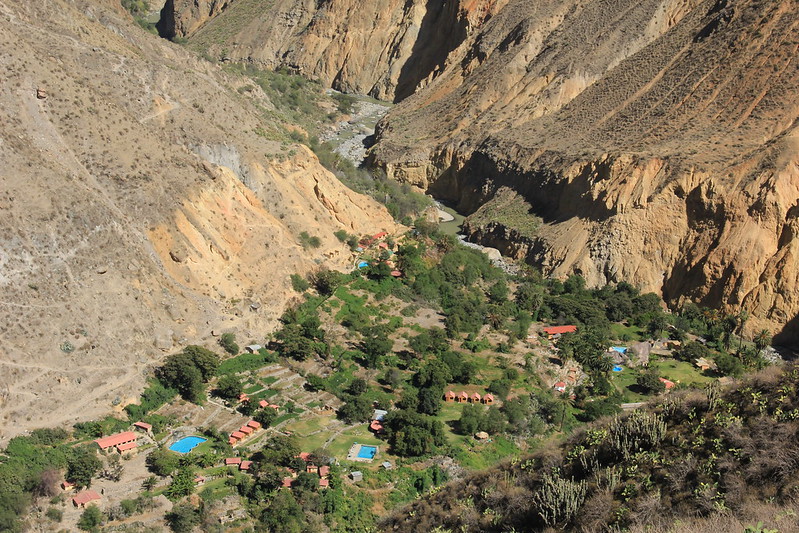
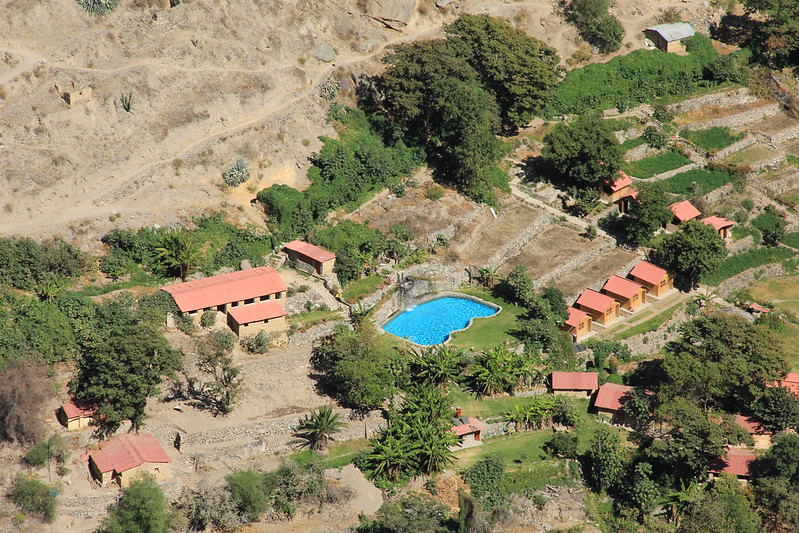
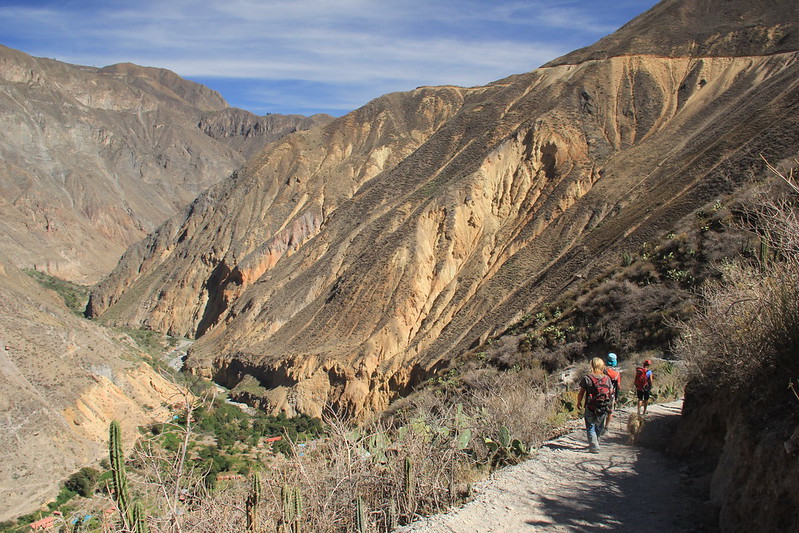

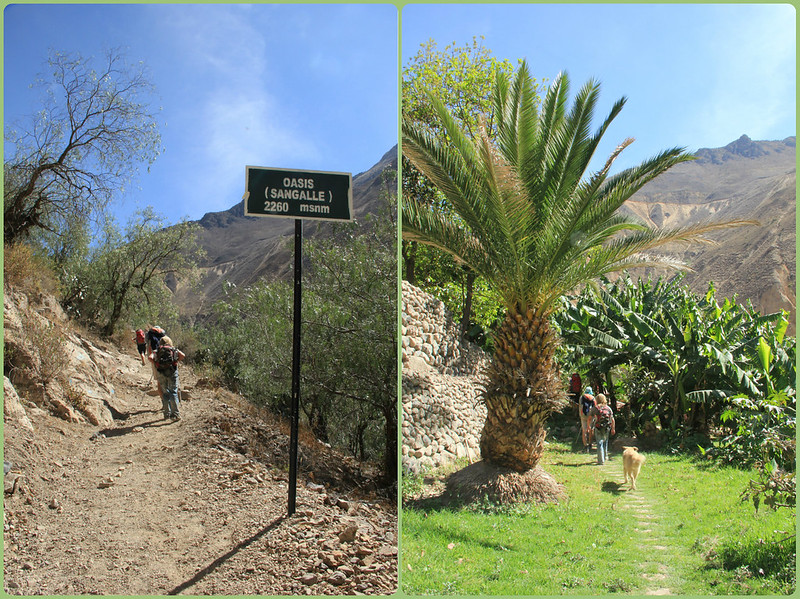
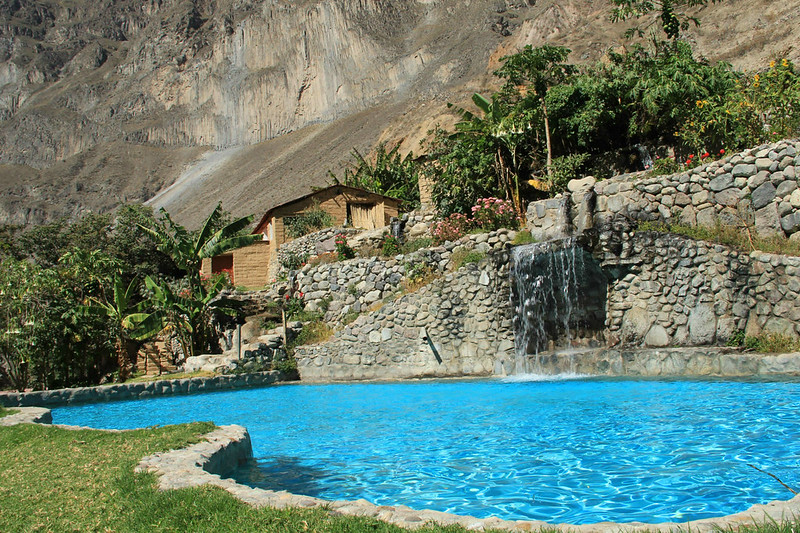

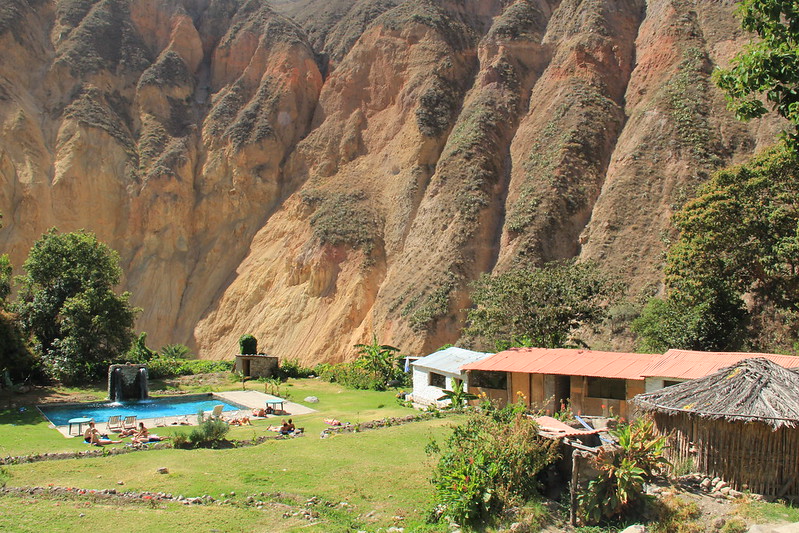
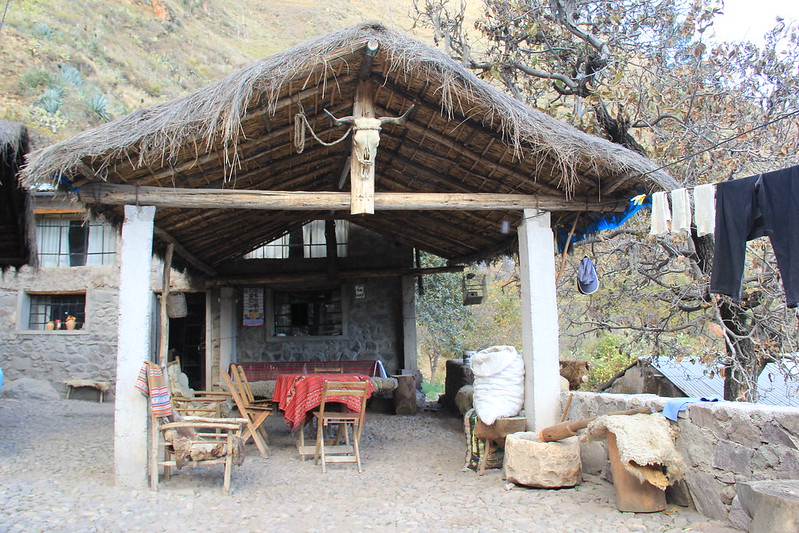






2 Comments
It was sad to think about how hard the mules work to bring tourists up the canyon:(. I feel really bad doing stuff like that too. I can also imagine how scary it is! I went horseback riding once up and down a canyon in the US and I was so scared that they were walking right on the edge of the cliffs. I hope Stu enjoyed it. 😛 And I hope the dog enjoyed his pizza! 😀
I know I felt so sorry for the mules, especially as their handler would not let them stop at all for a rest. I kept petting my mule, and even through his fur I could feel he was sweating bucket-loads 🙁